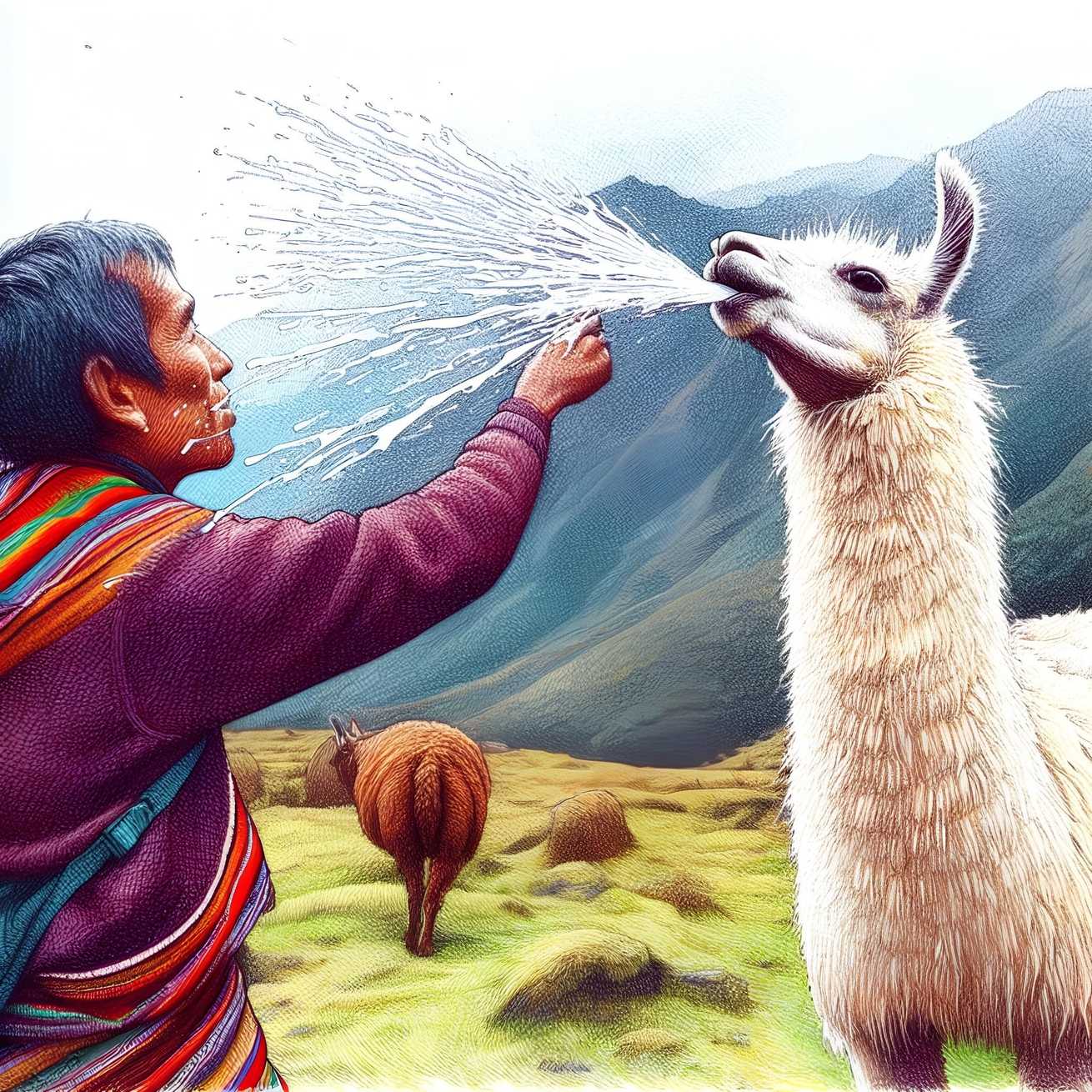Spitting is a behavior that has long puzzled observers of llamas and alpacas. While these South American camelids are known for their gentle and friendly nature, the sudden expulsion of saliva and partially digested food can catch anyone by surprise. Llamas and alpacas, distant relatives of the more famous dromedaries and Bactrian camels, belong to the camelid family.
Camelid Communication
Llamas and alpacas communicate through a variety of visual and non-verbal cues. These cues include body language, ear positioning, and tail movement. By understanding these forms of communication, we can gain insights into their social dynamics and the contexts in which spitting occurs. Spitting in llamas and alpacas serves as a unique form of social signaling.
While spitting can be used as a means of conflict resolution, it also plays a role in asserting dominance or signaling discomfort.
Indigenous to the Andes region of South America, these creatures have played vital roles in the lives of the people living in the high-altitude terrains. Understanding the behavior of llamas and alpacas, including the enigma of spitting, provides valuable insights into the world of these camelid cousins.
Why Do Llamas Spit?
Llamas are herd animals and primarily use spitting to establish a hierarchy within the herd. Triggers for spitting can include food jealousy and competition between individual male llamas.
Simultaneously, spitting serves to defend the herd against potential threats. If a llama does not gain respect by spitting, it kicks. In extreme cases, llamas might even bite, using their large teeth as a defense mechanism. The preceding spitting is both a threat and a first warning.
Most often, fellow llamas fall victim to these wet attacks.
Humans rarely experience this strange reaction. However, if you ever get spit on by a llama, consider it a reprimand or a sign of irritation. For instance, if you stopped feeding the animal prematurely, you might find yourself on the receiving end of a llama’s spray.
Llamas also spit on humans if they feel harassed or mistreated. Additionally, imprinting issues can be a reason for this aggressive behavior, which often occurs in male llamas when they reach sexual maturity. If you get spit on by a llama, it was likely intentional. Llamas can spit with precision, reaching up to five meters.
Llamas and alpacas can spit at humans if they feel threatened, cornered, or provoked. It’s essential to approach them calmly and respectfully to avoid spitting incidents.
Llama Spit: A Healing Liquid
What many people don’t know is that the substance they spit isn’t saliva but stomach juice. This semi-liquid, greenish secretion emits an unpleasant odor. Llamas are ruminants. To extract essential nutrients from grasses and plants, they need to allow the food to pass through their three stomachs. The llama repeatedly regurgitates digested food to chew it again.
Being hit by llama spit is unpleasant but harmless to humans. In contrast, the saliva of poisonous snakes can be deadly. In fact, llama spit contains beneficial substances. Researchers have found that llama saliva has healing properties. The animals’ immune systems produce specific proteins called nanobodies or single-domain antibodies, which can be used to treat inflammatory diseases such as rheumatoid arthritis.
In some traditional Andean cultures, llama and alpaca wool is used to create textiles. While spitting is not a desirable aspect of their behavior, the wool they produce is highly valued for its quality and use in textiles.
Other Animals That Spit
Spitting is a trait within the llama family. Llamas belong to the camel family, which also includes alpacas and vicuñas. Even desert camels, such as dromedaries and Bactrian camels, are part of this family.
These animals are known for their spitting tendencies. However, unlike large camels, smaller animals rarely spit; they usually have foam around their mouths.
Cobras, archerfish, spiders, walruses, or certain fly species also spit, not only for defense but for distraction, temperature regulation, or feeding purposes.




